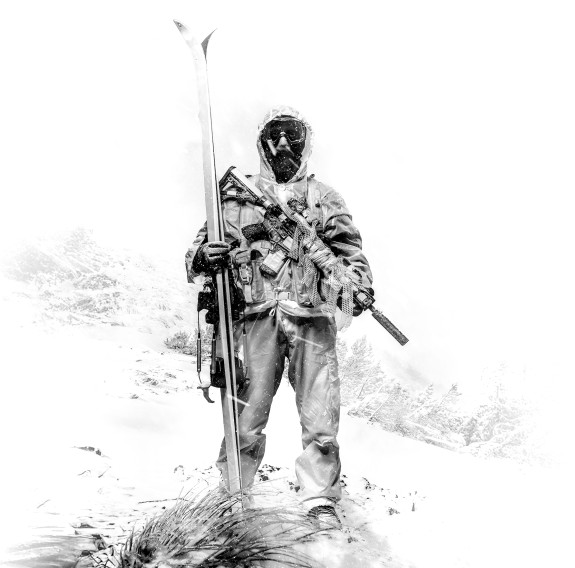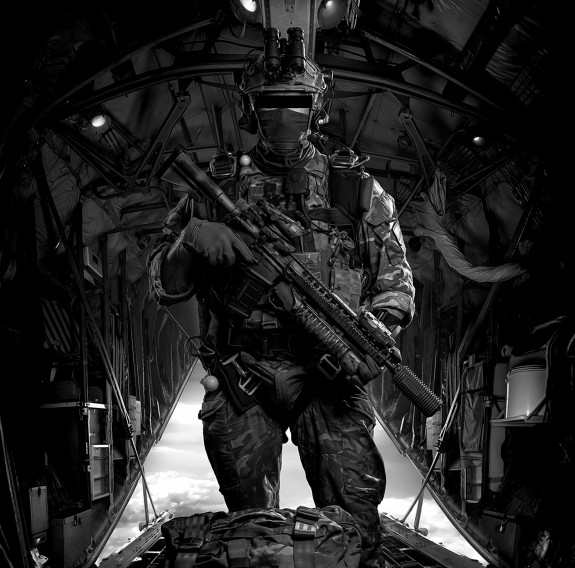70 Years of Service
nzsas
09 June, 2025
There is a reason the New Zealand Special Air Service (NZSAS) Regimental beret and belt carry such esteem. To earn the Special Forces badge is the result of one of the toughest, technically challenging, physically and mentally chastening selection courses and training cycles that exist in the world. It is gruelling because it has to be.
To be a badged NZSAS member means you are trained, ready and willing to serve New Zealand’s interests in the most complex and difficult environments; to go where others can’t, to protect those who are unable to protect themselves. And through that adversity comes great responsibility, and privilege.
June 7th, 2025, marks 70 years since the NZSAS raised its first squadron to join the war efforts in Malaya alongside the British Army’s 22 SAS Regiment. From those humble beginnings forged in the Waiouru Military Training Area and the jungles of South East Asia, the NZSAS has since grown to become a full Regiment, trained to deliver a wide variety of military options to the New Zealand Government, both domestically and abroad, independently and alongside other agencies, partner nations and militaries.
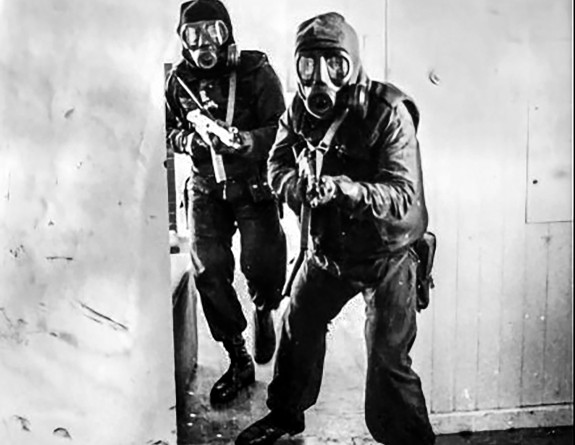
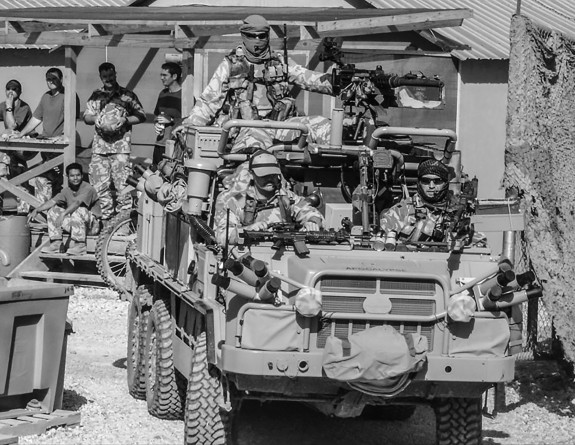
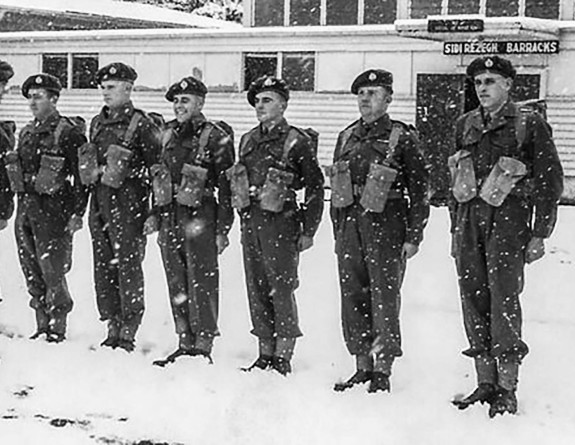
Special Air Service members, Explosive Ordnance Disposal operators, Commandos, and Special Operations Enablers have all played a role in elevating the NZSAS to be among a handful of Tier 1 Special Forces units in the world. The Regiment has a history of engagements spanning seven decades; from combat-focused missions and operations through Malaya, Vietnam and Kuwait, to peacekeeping and close protection efforts in Rhodesia and Bosnia with humanitarian and disaster responses.
In more recent times, NZSAS operators have played crucial roles in multi-national efforts across the Middle East and in the Pacific in both peacekeeping and combat roles. A lot has changed within the Regiment over the course of 70 years; evolving training methods, adapting to the changing nature of warfare, the physical locations of its bases, and the hundreds of personnel and support staff who have supported, enabled and maintained the Regiment over the decades.
But many things have not, and will not change; the operational experience, professionalism and the unrelenting pursuit of excellence that embodies every member of New Zealand’s Special Forces.
Who Dares Wins.
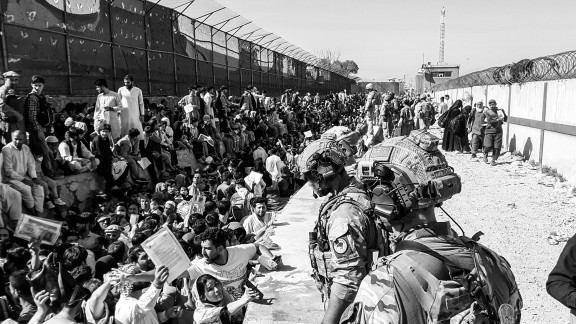
1 NZSAS celebrates 70 years of service narrated by the Commanding Officer.
From the Commanding Officer and Regimental Sergeant Major
It is our privilege to be able to write a few words to commemorate what is a significant and exciting milestone for the Regiment.
We recognise all those who have gone before, our fallen, our families, and all those who continue to deliver in order for the Regiment to do what it does today.
So much is demanded of the Regiment’s soldiers, sailors, aviators and civilians. They’re trained to the highest levels and benchmarked against the world’s best so that if required, they will go into harm’s way.
No task is too big or small, no mission is too difficult or dangerous. We are privileged to be asked to conduct some of New Zealand’s most sensitive missions, and that privilege is a Regimental taonga we relentlessly protect.
Our small country can only produce a Special Forces Regiment because of the world class quality of Ngāti Tūmatauenga, the New Zealand Army, the wider Defence Force and our national security partners. Our Regimental whakapapa is woven into the operational, intelligence and organisational history of many other Regiments, Units and agencies.
We could not be a nationally-integrated Special Operations Force and Regiment, without a team. New Zealanders should sleep safely at night knowing they have an exceptional team protecting our home, our borders and our interests.
New Zealanders should be proud of their Special Air Service. We have always, and continue to stand for the best of what New Zealand has to offer.
Our Special Air Service operators, our Explosive Ordnance Disposal operators and Commandos stand ready to strike and to go into harm’s way to protect and promote the best of New Zealand. They do so supported by world class Special Operations Enablers delivering highly-trained effects across the spectrum of special operations.
It is crucial that we, the Regiment of today, continue to uphold the same values and standards set by those in the very beginning, our Originals forged in the shadow of Ruapehu, who were stood up and later deployed as a strategic statement of our commitment to the international rules-based order.
We will dare to win, we are ready to strike, and we will go into harm’s way to keep New Zealand, its people and interests safe.
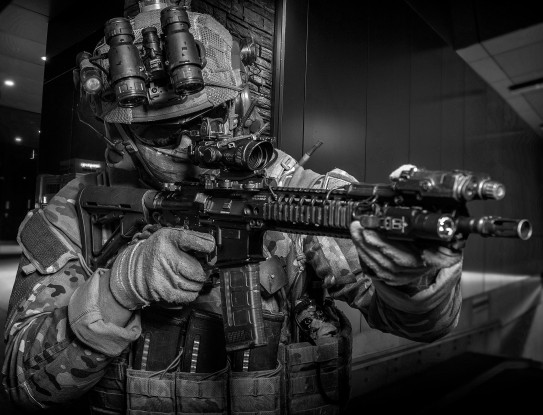
The NZSAS are among a handful of Tier 1 Special Forces units
That strategic nature of employment of the NZSAS remains at the heart of why we exist today. Alongside the NZDF’s other platforms the NZSAS gives New Zealand the option to contribute, to be seen and make a difference.
So it’s with that legacy in mind that we would like to thank each and every person who has supported, contributed to, or maintained the Regiment over the past seven decades. You have been seen, you have made a difference.
We also thank those who have served discretely in corners of the world conducting partnering, liaison and intelligence missions quietly and without acknowledgement.
But the 70th isn’t just about a nod to our operations, it is also about those who sharpened the blade in classrooms, operations rooms, and in the field. Special Forces have continuously honed their skills, taught the next generation, developed new tactics and embraced new technology. Our history is marked by pursuing excellence.
At the heart of that pursuit is a ritual that marks life in this Regiment more than any other activity - the ‘hotwash’. An event without sense of class, underpinned by the highest standards of discipline and humility, that pulls out every inch of improvement and every possible lesson.
In a sea of constant change, the hotwash has remained at the centre of our Regiment since 1955, and will continue to be long into the future. It is a crucial component of our tikanga. At the heart of the hotwash is our non-commissioned officers, warrant officers and officers asking hard questions and holding each other to account. The heart of the Regiment has always been a small group of people, sitting down and asking each other how we can do better next time.
The 1st NZSAS Regiment has played a significant role in keeping New Zealand safe and making a difference wherever it is sent.
For 70 years we have always been ready. We look forward to another 70 years pursuing excellence for New Zealand.
Who Dares Wins
CO and RSM of the 1st NZSAS Regiment
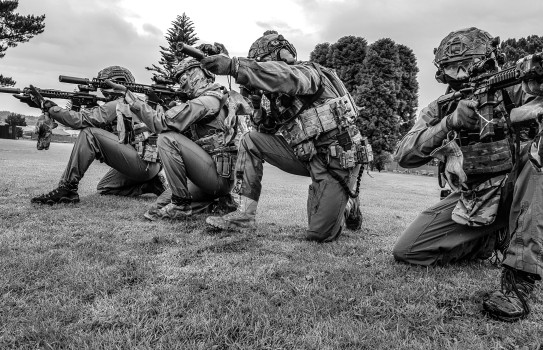
Members of the NZSAS Female Engagement Team
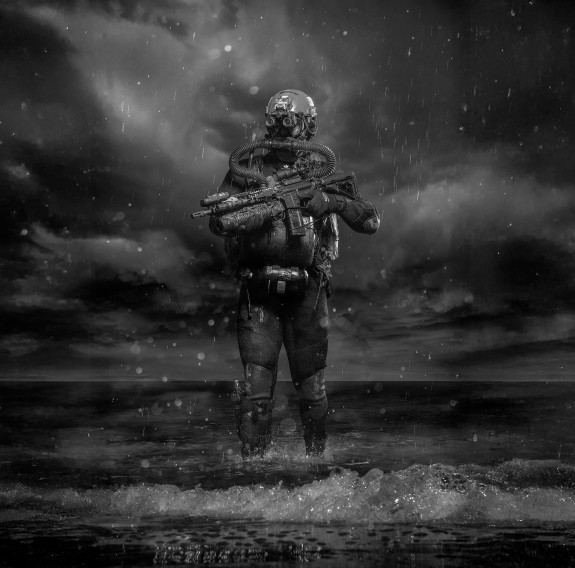
NZSAS members are trained to operate across all domains
Defining moments of an elite force
-
1940: British Army established Special Operations Executive (SOE)
The British Army established the Special Operations Executive (SOE) to conduct operations in Nazi-occupied Europe. A number of New Zealanders served with the SOE.
-
1941: British Army first Special Air Service (SAS)
The British Army raises the first Special Air Service (SAS). Its initial operations in North Africa are based on tactics practiced by the renowned Long Range Desert Group, a force comprising many New Zealanders.
-
1942: Pacific Commando Forces formed in Fiji and Tonga
Pacific Commando Forces are formed in Fiji and Tonga. They are trained as Commandos after New Zealanders themselves are trained by British Commandos in Australia.
-
1955: The Originals
New Zealand decides to raise its own SAS Squadron to deploy alongside the British in Malaya. It does so to allow New Zealand to credibly contribute to the campaign in a impactful but cost-effective manner. From an original 800 applicants, 182 began training in Waiouru, with 133 making the final cut.
-
1955: Malaya
First members of the Squadron deployed to Malaya ahead of the main contingent’s arrival in November. The New Zealanders were tasked primarily with jungle patrols, and had regular engagements with the Malayan National Liberation Army.
-
1957: Formation of the NZSAS Association
The Originals were officially disbanded as a unit following their return from Malaya. Efforts grew, supported by the formation of the NZSAS Association in 1957, to re-establish the unit.
-
1959: 1st New Zealand Special Air Service Squadron
1st New Zealand Special Air Service Squadron was re-established in Papakura Military Camp, Auckland. This would become the Unit’s long-term home, apart from one less a period spent in Hobsonville.
-
1962: NZSAS stationed in Thailand
A Squadron deploys to Thailand as part of New Zealand’s support of the South East Asia Treaty Organization (SEATO) response to counter communist expansion in South East Asia.
-
1965: NZSAS deployed to Borneo
A detachment deploys to Borneo to assist in anti-infiltration operations under the command of the British 22nd SAS and would rotate through four detachments in total, remaining in Borneo until October 1966.
-
1968: NZSAS deploys to South Vietnam
A Troop deploys to South Vietnam alongside an Australian Squadron in support of US and allied operations. They conduct long range patrols, ambush and intelligence tasks.
-
1979: Deployment to Rhodesia in peace-keeping and peace-monitoring roles
The NZSAS is trained and equipped to provide Counter Terrorism support to New Zealand Police, a capability and output the Regiment maintains today.
-
1980: Infiltration skillsets developed
A number of infiltration skillsets are developed in detail. This creates significant amphibious, mountain and parachuting advancements for the SAS Squadron.
-
1985: NZSAS was expanded into a Regimental-level 1st NZSAS Group
The NZSAS is expanded from a single squadron into a Regimental-level 1st NZSAS Group made up of two SAS squadrons, a Support Squadron and a training school.
-
1996: Deployment to Bosnia
Members of 1st NZSAS Group were deployed to Bosnia after the break-up of Yugoslavia. They served in Close Protection roles as members of UNPROFOR, a protection force of NATO (close protection role).
-
1997: Operation Belisi, Bougainville
A detachment deploys on Operation Belisi to Bougainville as a peace-monitoring force between the Papua New Guinean government and the Bougainville rebel factions.
-
1998: Operation Griffin, Kuwait
A NZSAS squadron deploys on Operation Griffin to Kuwait in the Persian Gulf to support combat search and rescue tasks in the event of a US-led aerial campaign.
-
1998: Papua New Guinea earthquake and subsequent tsunami
A detachment deploys to Papua New Guinea following a devastating magnitude 7 earthquake and subsequent tsunami to provide medical support.
-
1999: East Timor
NZSAS squadron deploys to East Timor to evacuate people from the capital Dili, and then subsequently deployed across East Timor to protect infrastructure and secure UN movements.
-
2000: East Timor
A detachment deploys to East Timor following attacks on the NZ Infantry Battalion. NZSAS trackers support the hunt for militia along the Timorese border.
-
2001: Operation Concord, Afghanistan
NZSAS squadron deploys to Afghanistan on Operation Concord I to conduct long-range reconnaissance patrols, covering up to 2000 kilometres. The last forces returned in December 2002.
-
2002: Papakura Military Camp
The Unit’s new Rennie Lines Headquarters are opened in Papakura Military Camp, signalling a return to the base after a period spent at Hobsonville Air Base.
-
2004: Operation Concord II, Afghanistan
NZSAS squadron deploys to Afghanistan on Operation Concord II to undertake long-range extended duration patrols. Lance Corporal Willie Apiata wins the Victoria Cross for New Zealand.
-
2005: Operation Concord III, Afganistan
NZSAS squadron deploys again to Afghanistan on Operation Concord III to undertake long-range extended duration patrols. This deployment includes the Unit’s first organic long-range vehicles.
-
2005: Explosive Ordnance Disposal (EOD) unit stood up
A tri-service Explosive Ordnance Disposal (EOD) unit is stood up which will eventually become part of 1NZSAS as E Squadron. It begins years of successful operations around the Pacific, the world and across New Zealand.
-
2005: First NZ Commando selection
The first NZ Commando selection begins to create a Domestic Counter-Terrorist (DCT) specific force to assist Police and other agencies.
-
2009: Operation Wātea, Afghanistan
NZSAS squadron deploys on Operation Wātea to Kabul to mentor and support Afghan Special Forces and protect the capital city against a campaign of significant attacks.
-
2013: NZSAS Regiment is approved
1st New Zealand Special Air Service Regiment is approved. The Unit is given Regimental status in recognition of the size, breadth and output of the modern NZSAS.
-
2018: Operation APEC Assist
NZSAS squadron deploys on Operation APEC Assist alongside Australian Special Forces to support the Papuan Long Range Reconnaissance Unit and secure leaders visits during APEC 2018.
-
2021: Operation Kōkako, Afghanistan
NZSAS squadron deploys on Operation Kōkako to Kabul to aid with the evacuation of almost 400 New Zealanders and others from Afghanistan following the Taliban’s return to power.
-
2025: 70th anniversary
1st New Zealand Special Air Service celebrates its 70-year anniversary. Read the full story.
Note: For security reasons a number of operations remain protected.
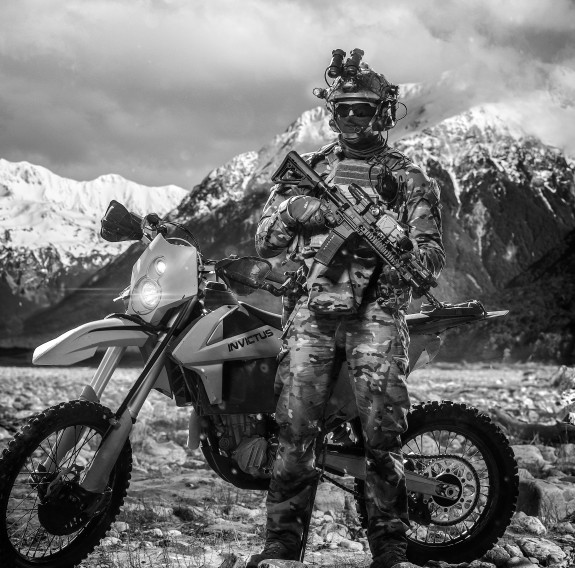
Long-range extended duration patrols have historically been a strength of the NZSAS
Support behind the NZSAS
The NZSAS Regiment is incredibly well-supported by both the NZSAS Regimental Association and the NZSAS Trust; a non-profit organisation and charity both set up to assist NZSAS personnel and their families.
They both provide assistance to wounded NZSAS soldiers and the families of deceased NZSAS soldiers.
They also support ex-members into new employment outside of service as well as providing formal educational or vocational training programmes for ex-service people and their families, and financial support if required for those who require it.
NZSAS members and their families are deeply grateful for the ongoing support of the Association and the Trust.
NZSAS Ode
The Master of the Caravan said:
But who are ye in rags and rotten shoes,
You – dirty bearded, blocking the way?
The Pilgrim answered:
We are the Pilgrims, Master; we shall go
Always a little further: it may be
Beyond that last blue mountain barred with snow,
Across that angry or that glimmering sea,
White on a throne or guarded in a cave
There lives a prophet who can understand
Why men were born: but surely we are brave,
Who take the Golden Road to Samarkand.
- James Elroy Flecker, ‘The Golden Road to Samarkand’ (1913)
